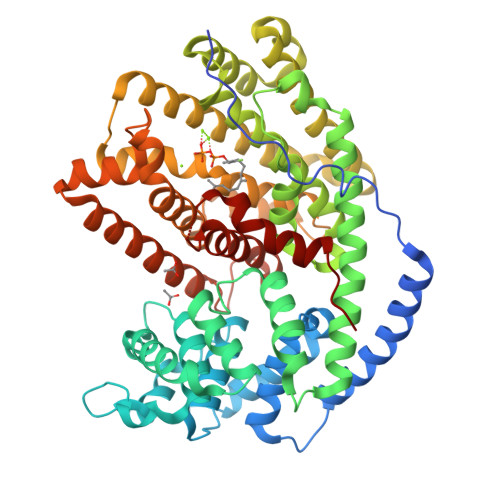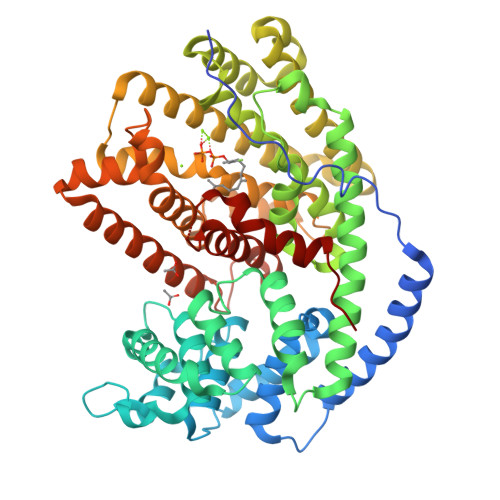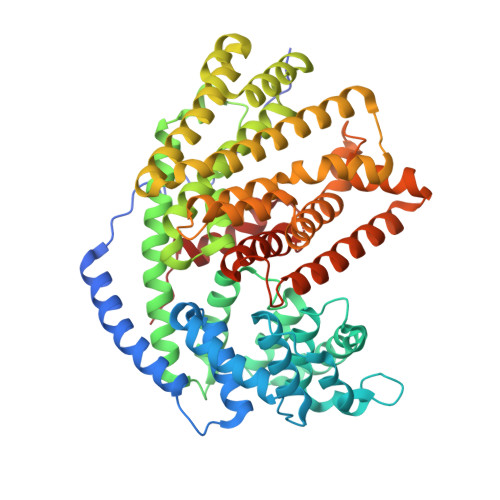Structural elucidation of cisoid and transoid cyclization pathways of a sesquiterpene synthase using 2-fluorofarnesyl diphosphates.
Noel, J.P., Dellas, N., Faraldos, J.A., Zhao, M., Hess, B.A., Smentek, L., Coates, R.M., O'Maille, P.E.(2010) ACS Chem Biol 5: 377-392
- PubMed: 20175559
- DOI: https://doi.org/10.1021/cb900295g
- Primary Citation of Related Structures:
3LZ9, 3M00, 3M01, 3M02 - PubMed Abstract:
Sesquiterpene skeletal complexity in nature originates from the enzyme-catalyzed ionization of (trans,trans)-farnesyl diphosphate (FPP) (1a) and subsequent cyclization along either 2,3-transoid or 2,3-cisoid farnesyl cation pathways. Tobacco 5-epi-aristolochene synthase (TEAS), a transoid synthase, produces cisoid products as a component of its minor product spectrum. To investigate the cryptic cisoid cyclization pathway in TEAS, we employed (cis,trans)-FPP (1b) as an alternative substrate. Strikingly, TEAS was catalytically robust in the enzymatic conversion of (cis,trans)-FPP (1b) to exclusively (>/=99.5%) cisoid products. Further, crystallographic characterization of wild-type TEAS and a catalytically promiscuous mutant (M4 TEAS) with 2-fluoro analogues of both all-trans FPP (1a) and (cis,trans)-FPP (1b) revealed binding modes consistent with preorganization of the farnesyl chain. These results provide a structural glimpse into both cisoid and transoid cyclization pathways efficiently templated by a single enzyme active site, consistent with the recently elucidated stereochemistry of the cisoid products. Further, computational studies using density functional theory calculations reveal concerted, highly asynchronous cyclization pathways leading to the major cisoid cyclization products. The implications of these discoveries for expanded sesquiterpene diversity in nature are discussed.
Organizational Affiliation:
Howard Hughes Medical Institute, USA.





















